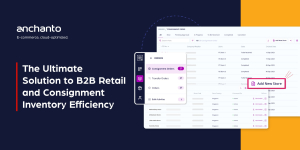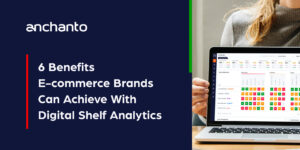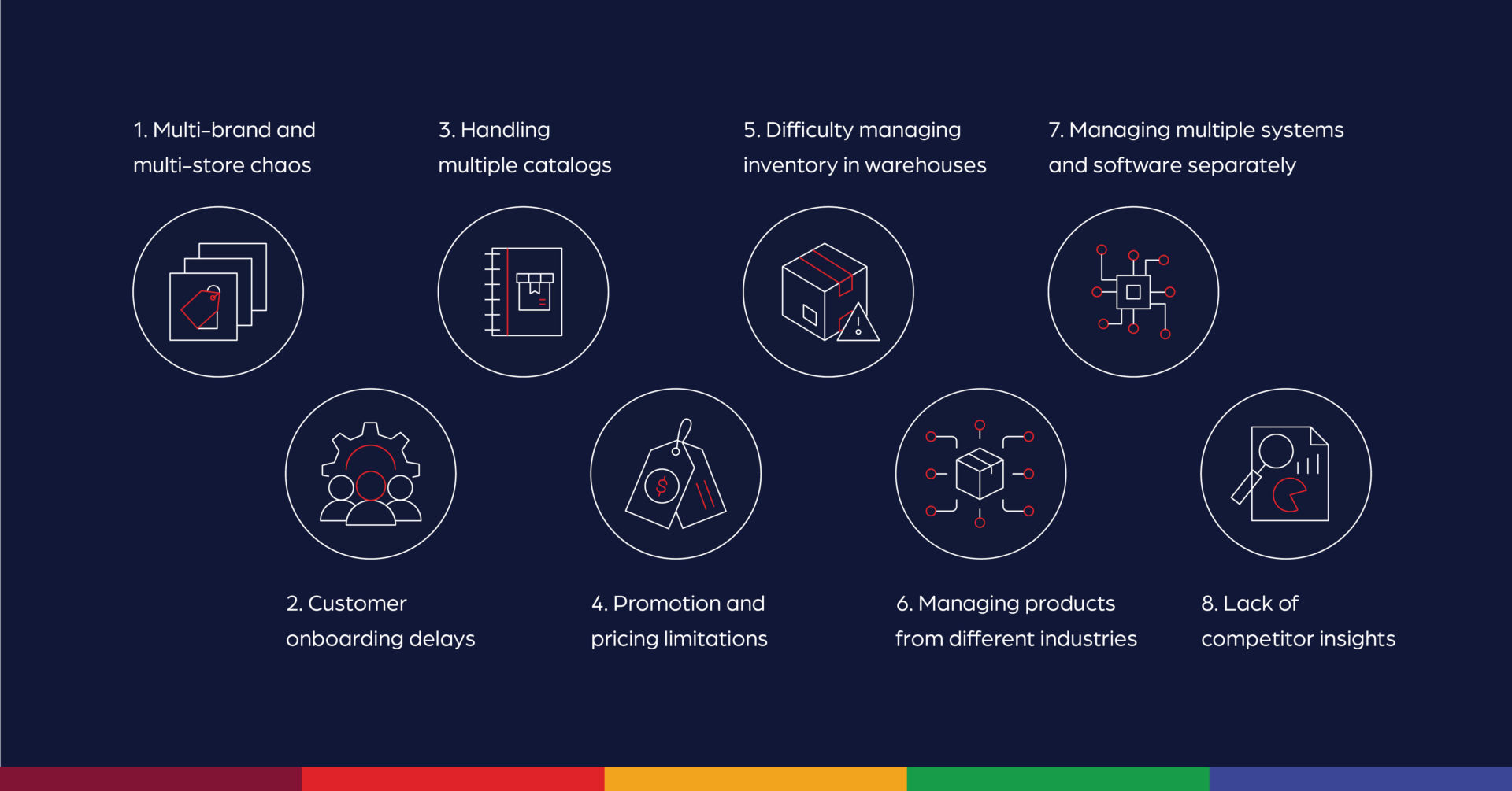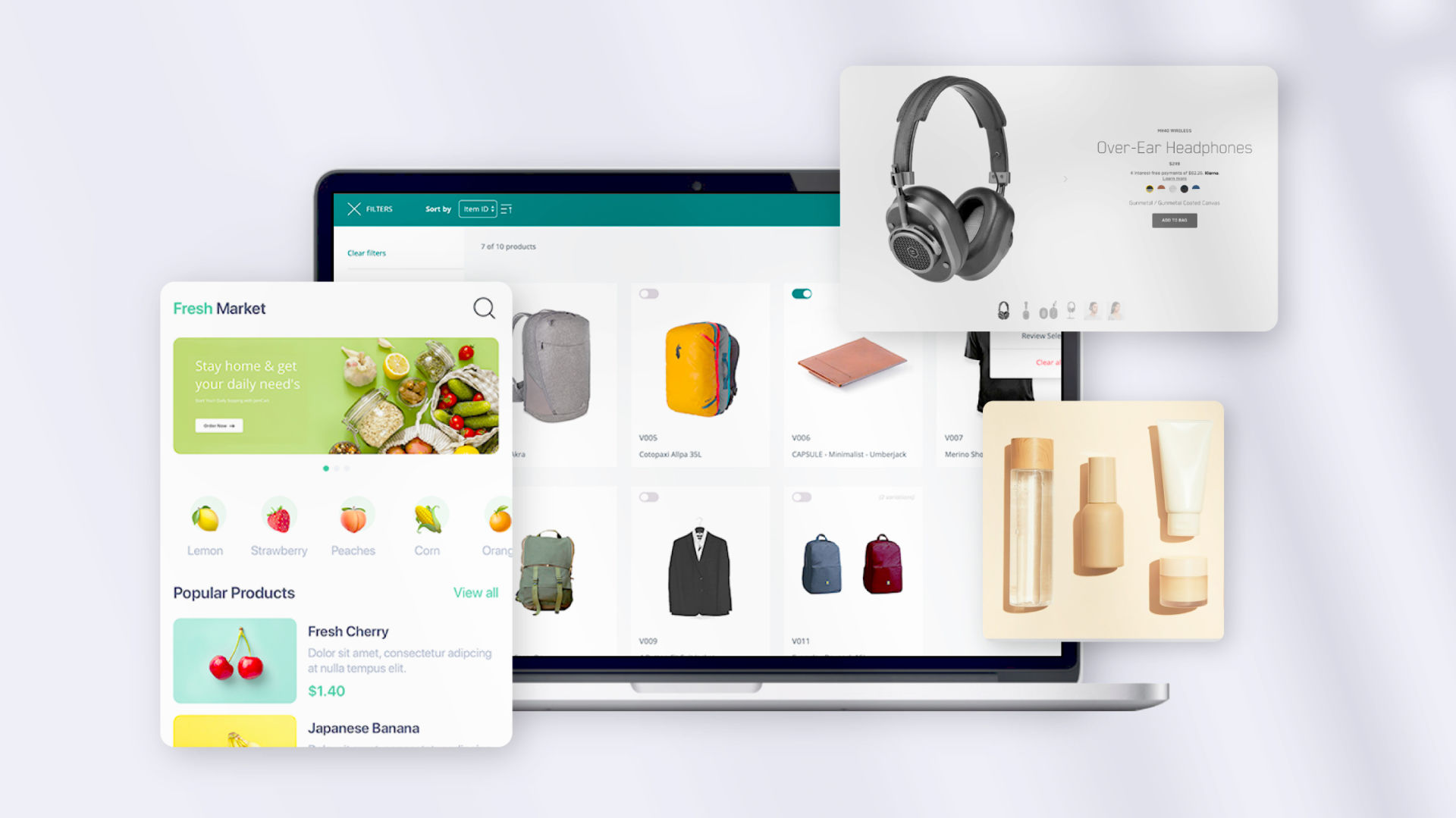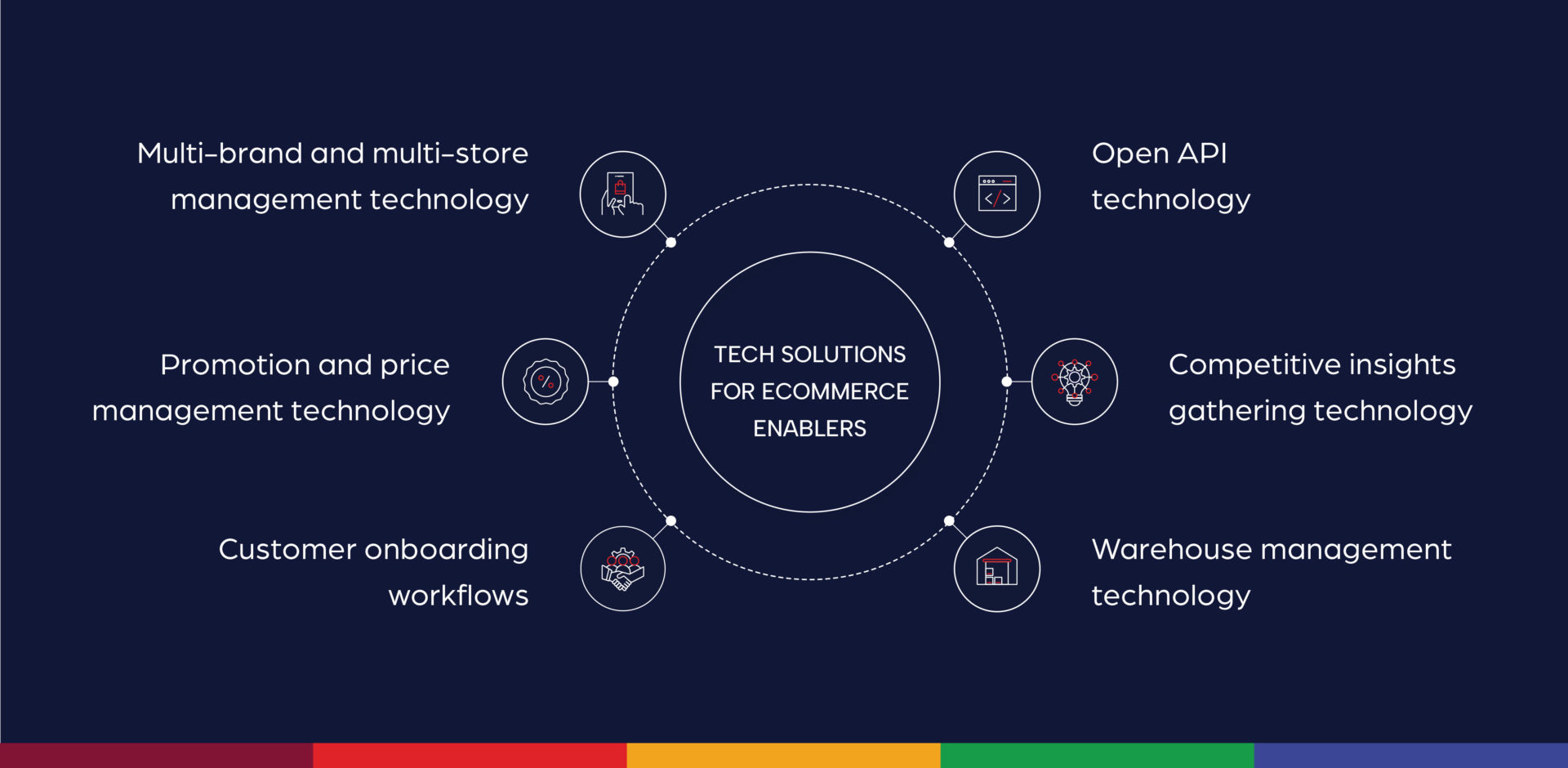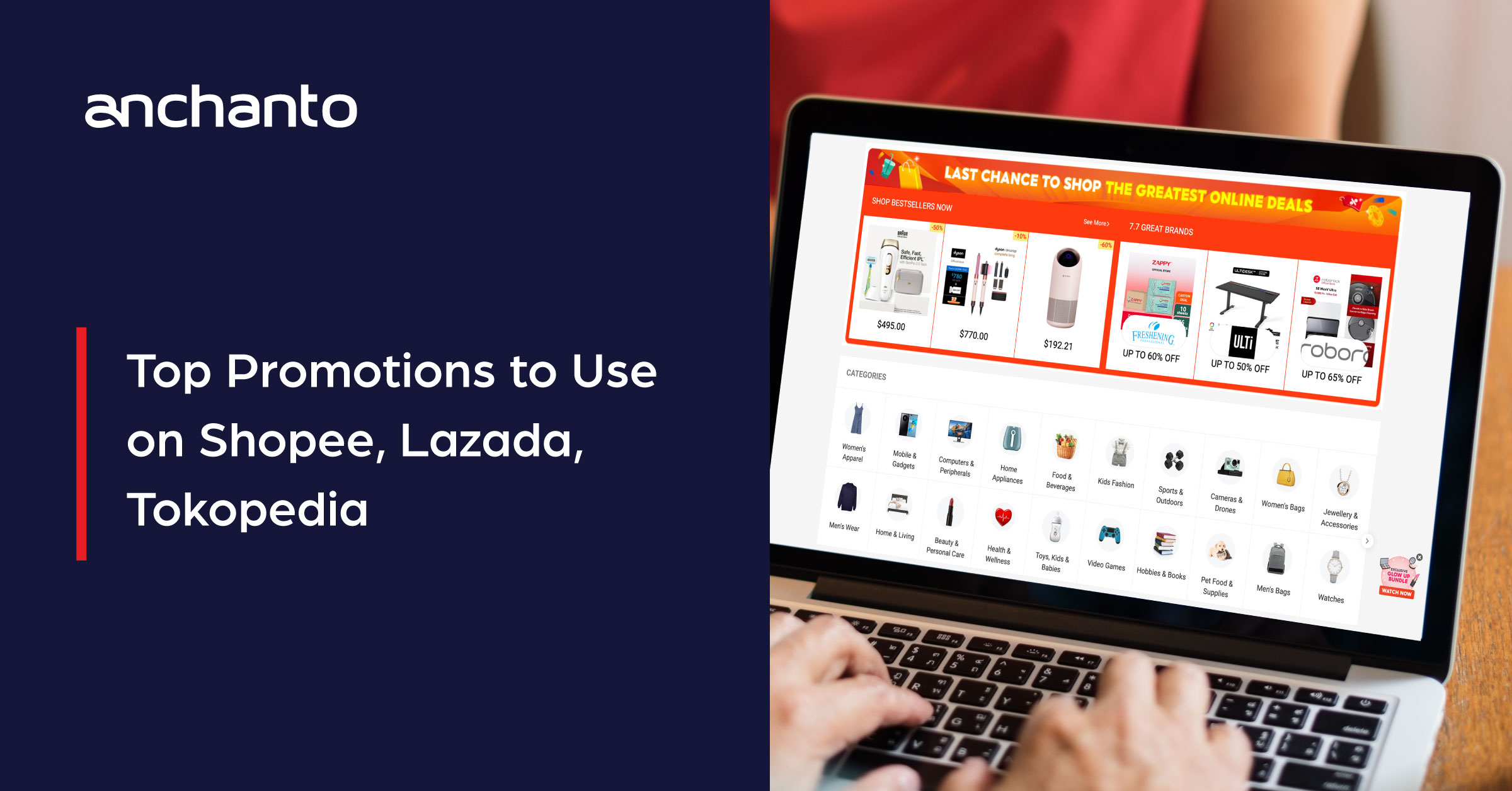
An E-commerce Enabler’s Guide: Solutions For Success + Case Studies
1. Introduction
In the digital space, e-commerce is one of the fastest-growing sectors worldwide. Global online retail sales amounted to approximately US$ 4.9 trillion in 2021[1], and this figure is predicted to increase by 50% in 2025.
As a result of this potential growth, more businesses are interested in e-commerce and are seeking e-commerce enablers to help them navigate this space. e-commerce offers retail businesses a broad range of opportunities. They can go across borders, reach individual customers, test new products, implement omnichannel retail, and more. But most businesses require help with their e-commerce operations as they involve multiple aspects like marketing, storage, fulfillment, and transportation.
So it’s quite evident that your enabler services become more desirable as e-commerce growth multiplies. And to serve the brands entering online markets you must be well-equipped to position, promote, and deliver their products to a broad consumer network. More so, you need to prepare for the challenges posed by the e-commerce industry and the desires of your prospects with relevant e-commerce enabler solutions.
2. Challenges faced by e-commerce enablers
While the e-commerce enabler sector is exciting and fast-growing, there are a few hurdles present too. With a few brands on board, these challenges may appear manageable, but as you scale up or experience competition over time, the intensity of these obstacles increases.
To nip them in the bud, it’s crucial to understand the source of your challenges and what makes it a struggle for your business. Here’s a list of the top challenges you may experience as an e-commerce enabler:
a. Multi-brand and multi-store chaos
The number of digital retail stores and marketplaces available today has increased significantly as every brand desires to make its mark online. Moreover, selling across different digital channels reduces selling risks and boosts brand visibility. This makes it imperative for you to offer multi-store management as a service to your brands.
But, managing several stores for different brands can become overwhelming without appropriate order and inventory management. Synchronizing orders with the appropriate SKUs in stock is complicated and the chances of making errors are high and so are the stakes if you mix up brand orders.
b. Customer onboarding delays
Customer onboarding is challenging because most brands are not e-commerce ready. They have no process in place to handle e-commerce, and as their enabler, you have to set up most of their e-commerce operations from start to finish.
When onboarding a new brand, you must work quickly to take their products live across all relevant e-commerce platforms. But the speed of going live online will depend on the number of products your brands want to sell digitally.
The more product catalogs you have to create, the longer onboarding will take, thereby delaying the go-live process. The added challenge is that you will need to prepare catalogs for each of the marketplaces on which you plan to list your client brand’s products. e-commerce marketplaces have varying requirements when it comes to product listings so you cannot use the same listings for all marketplaces.
You also need to set up order processing, fulfillment, and shipping options. These processes must be in line with marketplace SLAs (service level agreements) and allow you sufficient visibility to control them. If not, consumer experience will be affected.
c. Handling multiple catalogs
Preparing and managing catalogs and listings for thousands of products for hundreds of brands is no easy task. These catalogs must be maintained securely to avoid misuse, unauthorized changes, and mixups between brands or products. The result of any of these situations could impact your clients’ trust in your business.
The absence of a system to help you manage your clients’ catalogs will also delay your efforts to list their products quickly on marketplaces and introduce changes to pricing, images, and product descriptions during seasonal sales, festive periods, or flash sales.
d. Promotion and pricing limitations
Customized promotions and attractive pricing that directly appeal to customers are the most effective means to boost sales. But creating unique promotions like free gifts with the first hundred orders is challenging with limited features provided by marketplaces and e-commerce platforms.
Sultan Joson, the CEO and Founder of Cloud Logic Limited, Philippines says, “Most of our customers are in fashion retail. The challenge (for them) is not the industry itself, but more the limitations of the platform, marketplace, the dot.com (they sell on). For example, GWP (Gifts with Purchase) it’s an arm of the fashion retail industry. Lazada promotions are very limiting as to what we can do.”
Similarly, customizing promotional discounts, bundles, kits, and product combinations for a substantial impact, you need to understand what your target audience desires. For this, you’ll require performance data from previous promotions, review comparisons, and customer data.
Unfortunately, reviewing customer information and performance data of past promotions is challenging when you use multiple sales platforms. Collating the data and drawing insights from the information gathered is a long process. Not to mention, managing individual promotions on different sales channels and making changes to them without the right technology takes a while.
e. Difficulty managing inventory in warehouses
Dealing with the inventory of hundreds of brands on a daily basis requires a large workforce for inbounding, outbounding, and overall inventory management. This can become a big expense over time and your resources may be difficult to manage given the number of people you require.
What’s worse is your resource requirement may vary from season to season. So laying off staff or hiring temporarily can affect employee morale, your business value, and your efficiency.
There’s also the challenge of tracking items within a vast warehouse. It can be challenging for new inventory pickers to locate items immediately for fast order processing and fulfillment. And in the event of stock units going missing, it’s challenging to investigate what happened.
Then, there’s the challenge of losing sight of what’s in stock.
“We can have invisible or phantom items lying around. Items that have been forgotten for months,” claimed Anthony Co, CTO and Founder of Cloud Logic Limited, Philippines.
Lack of awareness of what’s in stock can lead to overstocking or understocking, this can impact sales, contribute to dead or expired stockpiles, or wastage.
f. Managing products from different industries
Different products from different industries like fashion, cosmetics, electronics, and FMCG, all have specific storage and handling requirements. Some need temperature-controlled environments, cold storage, or specialty zones all of which must be mapped out perfectly to ensure optimum workflows that maintain product integrity. Other products such as cosmetics and consumables need expiry and batch management to avoid product wastage and keep track of stock.
Manual processes on their own hardly match the task at hand when dealing with products requiring special storage and handling. Most manual processes when inbounding stock and fulfilling orders are usually slow and unorganized translating to misplacement, poorly handled products, and unusable products.
g. Managing multiple systems and software separately
To deliver optimum sales and value-added services, you probably use different kinds of software and management systems. For example, ERPs to manage your billing, accounts, inventory, orders, promotion campaigns, carriers, etc.
Going back and forth between these systems is a real hassle when you handle different brands and products. Synchronizing these technologies and putting together uniform reports is another challenge.
Without the appropriate integrations, it’s impossible to achieve the right rhythm for your business operations. This can become a bigger pain when your brands demand real-time visibility and more control over sales and inventory.
h. Lack of competitor insights
Besides internal sales and inventory data, competitor insights come in handy to stay ahead of the competition. When you know what your competition is doing, you can match their efforts or go a few steps ahead.
For example, if your competitors are offering discount coupons on certain products, you could try offering more competitive but limited-period-only discounts to urge buyers to shop with your brands.
But sadly, acquiring competitor insights from different marketplace listings is a long, cumbersome task, if done manually. And the longer it takes to acquire competitor insights, the less effective they will be because your counter efforts will be delayed.
3. E-commerce enabler solutions you can count on
Despite the challenges, your efforts as an e-commerce enabler – from merchandising to fulfillment – are vital to support the success of brands. As an e-commerce enabler, you are the bridge between brands and the digital space. This is a highly lucrative position given the demand for online retail and the rising number of brands going D2C.
To ensure your opportunities as an enabler are not diluted by your e-commerce challenges, make the wise decision to include technology in your daily operations.
“E-commerce is a fragmented landscape that keeps evolving through time, with the right technology, enablers can easily maximize their retail reach, minimize human error, manual processes, and meet SLAs while enhancing productivity and efficiency to eliminate unnecessary or unpredictable operational expenses,” says Kyle Medina[2], Business Development Manager at Anchanto.
If you want to overcome the challenges of e-commerce and stay on par with other enablers in the online market, here are a few e-commerce enabler solutions you must consider implementing.
a. Multi-brand and multi-store management technology
Incorporating multi-channel and account management technology like an Order Management System (OMS) into your business can elevate your team’s capabilities. e-commerce management software can help you easily set up multiple shops (on marketplaces) and manage centralized inventory and unify orders for better management.
With these features, you can serve online shoppers immediately and satisfy your brands from the start of your business relationship with them. A powerful OMS will also enable you and your team to provide a lot of value to customers and brands.
b. Customer onboarding workflows
If you’re looking to speed up the onboarding process without errors, consider using a Product Information Management (PIM) system. This technology can store the product information of thousands of brands making it simpler for you to manage their product catalogs and listings.
A well-equipped PIM system will help you put together appropriate listings with predesigned templates that take into account the SLA (service level agreements) of different e-commerce platforms. This reduces the need for resubmissions as your brand’s new listings will have better chances of being approved.
Newer PIM systems also allow shared access to authorized users, which means you can share the catalogs you create with your brands for approvals, changes, additions, etc. It offers them complete visibility over the listing process and simultaneously cuts down the back and forth during the onboarding phase.
c. Promotion and price management technology
For fresh, personalized promotional campaigns that reap returns, you need to know what online consumers expect of the brands you represent. For this information, an OMS is an ideal source. It will help you track sales based on promotions and seasonal demand and also gather customer information vital to your promotions. This information is pulled from all the channels your brand(s) sells on and is presented in an easy-to-read format. Thereby allowing you to make quick campaign changes.
What also helps you make instant changes is the catalog management module of an OMS that provides direct access to pricing. Here you can change prices as per your requirement or upon the request of the brands you manage. Once the desired changes are made they will reflect across all the chosen e-commerce platforms.
Through a feature-rich OMS, you can even create product bundles, kits, freebies, and more. These can be made live with custom conditions via your OMS, that way you can encourage the urgency you desire when running your promotions.
d. Warehouse management technology
To get a handle on your inventory and ensure it’s being managed appropriately for all your clients, an e-Warehouse Management System (WMS) is ideal. This system records every item that enters and leaves your warehouse. Better yet, it helps you utilize your storage space optimally and records the exact location of each item in stock. And every time an order comes in, pickers within the warehouse who are closest to the inventory of the product ordered will receive the picking requirement. This ensures zero time wastage and the picker’s handheld devices will help them locate the exact product they need to pick.
A smart WMS helps new resources glide through their inbounding, picking, and outbounding tasks. It also keeps count of your various inventories so you don’t have to and speeds up operations without the need for more staff.
“With the automation provided by an OMS, your fulfillment service team can minimize labor costs to stay competitive. It also helps your business grow with minimal investment in additional headcount,” says Chakkree Champhot[3], Senior Business Development Manager at Anchanto.
An added benefit of a WMS is that it helps investigate lost items, stockouts, wastages, and can effectively deter them from occurring again. A WMS with batch and expiry management technology will ensure all items closest to expiry are sent out first. And with inventory segregation capabilities, the WMS will help you effectively manage stock requiring temperature control. This cuts down wastage. And real-time inventory visibility allows you to track all your inventory no matter where it is within your warehouse.
e. Open API technology
An OMS or WMS with open API technology can help you build a powerful custom software that integrates all your ERP requirements. That way, you can access whatever you require from a single source or dashboard.
Optimum integrations will allow you and your brands to effectively track sales, promotions, and inventory data in real-time. You can also manage your billing, accounting, and reconciliation through a single technology stack. If you use customer chat software, you can plug that in as well with an open API and handle all your backend operations through one platform.
There’s no need to design and develop new technology to accommodate all your requirements. You can continue to use the same ERP software you’re used to. All you need is an OMS or WMS with open API provisions.
f. Competitive insights gathering technology
As a service provider to brands, you need to offer them insights into the performance of their sales online. Providing competitive insights is an added bonus that many brands appreciate. It assures them you’re focused on taking their e-commerce business to greater heights.
To gather this information one of the ultimate e-commerce enabler solutions is digital shelf technology. It captures insights about competitors’ promotions, pricing, content, and reviews. This will give you a complete picture of what they’re up to and you can present the same to your brands.
Check if your OMS provider offers this technology. It will complement the sales and promotions reports they provide and give you a complete picture of where your client brands stand in the e-commerce market. It will even give you ideas to implement or suggest to your brands.
4. E-commerce enablers using technology for improved brand management
Knowing what technology is available to you is one thing, seeing its actual achievements is another. To verify the advantages of the above e-commerce enabler solutions, here are a few case studies with responses from users:
a. Cloud Logic
Cloud Logic is an e-commerce solutions (enabler) company that focuses on promoting internet commerce in the Philippines. They serve nearly 500 brands across different product categories. Moreover, they’ve partnered on multiple concept stores already to support their brands’ e-commerce sites.
With OMS technology, they managed to:
-
Help brands and companies move from legacy systems to new API-based ones
-
Reduce process time for some operations by up to seven days
-
Provide full visibility to brands and end consumers at every step of the way
-
Improve go-to-market time for brands
-
Simplify connection to different platforms and marketplaces
“Anchanto’s OMS system gave us the flexibility to create GWP (promotions) based on cart value, first hundred orders, and other features we can’t find (on marketplaces or e-commerce stores). It (really) adds to the features of (online retail) platforms,” says Sultan Joson, the CEO and Founder of Cloud Logic Limited, Philippines.
b. UrStore
UrStore offers warehousing, transportation, and web store management services to its clients. The e-commerce enabler offers B2B and B2C support to clients based on their requirements, and making mistakes could significantly impair their e-commerce efforts. To reduce inefficiency and errors, they decided to implement a WMS.
“We couldn’t afford to have mistakes and errors … Anchanto WMS helped us capture all details from order processing until inventory and even stock placement location. The (software) is very simple and easy to use. We can easily train our pickers and packers to use the handheld devices (integrated with the software),” says Zac Ngoi, Director of UrStore.
With the right e-commerce enabler solutions, UrStore now enjoys the advantages of:
-
Live updates about order statuses
-
Auto-generated billing
-
Better visibility for their clients
-
Easy to use technology
c. TresGo
TresGo offers three core services – storage, packing, and delivery. The company focuses on operations and relies on Anchanto’s SaaS technology to manage backend functions like inventory syncing, order management, and inventory management as a whole.
The e-commerce enabler serves clients from different industries such as fashion, beauty and cosmetics, electronics, and household items.
Nadhra Fauzi, the Co-Founder and Director of TresGo says, “When we first started, we built our own (inventory management) system. After a few years, we realized there are better options out there in the market and that’s when we started using Anchanto.”
Implementing Anchanto WMS allowed the company to:
-
Focus on their core operations
-
Seamlessly and automatically gather orders into one system (from different marketplaces, web stores, and other sales touchpoints)
-
Serve more product categories
-
Manage inventory based on expiry
“Anchanto is supporting us with not only the current system but with the future as they are listening to our concerns and our merchants’ concerns as well,” says Safiyya Azman the Co-Founder and Director of TresGo.
5. Conclusion
Modern online shoppers want high-quality products but also delightful purchase, delivery, and return experiences. Developing these capabilities is a tall order for most brands going online, but boosts the value of e-commerce enablers as they offer these very requirements.
However, as demand for e-commerce enablers increases so do the competition and challenges in this segment. To subdue these concerns, you must comprehend them and only then seek solutions. In most cases, your e-commerce enabler business will require a technological boost to help you cut costs and errors, integrations with administrative systems, carriers, and more.
“e-commerce enablers today are interested in OMS and WMS integrations with local and popular online sale channels. In Thailand, social commerce is rapidly rising, so enablers are seeking OMS technology capable of connecting with Facebook Messenger, Line Messenger, and Line My Shop. They also want a connection with worldwide marketplaces and 3PL service platforms – both domestic and overseas,” says Chakkree.
For e-commerce enabler solutions that can serve these requirements and beyond, reach out to the experts at Anchanto.

